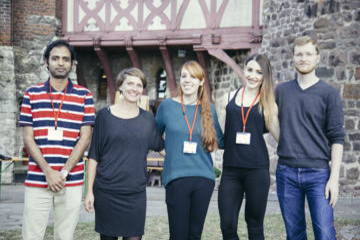Module 4
Brief description
Medical imaging enables non-invasive insights into structure and function of human nervous system without threat of the test person. The results of new techniques offer valuable clues about changes of brain structures and functions, e.g. during aging. Therefore, they display an indispensable tool for the diagnosis of cognitive dysfunctions and the evaluation of therapeutically interventions. However, these methods have the potential to significantly increase both the diagnosis of dysfunctions and the monitoring of the treatment while misdiagnosis and unsuccessful treatments are reduced. Consequently, the contribution to an improved and patient-centered care will lower the costs in the public health service and significantly increase the quality of patient’s life.
This module focusses on the further development of spatial and temporal high-resolution imaging methods using a combination of functional magnetic resonance tomography (MRT), electroencephalography (EEG), positron emission tomography (PET) and deep brain branching on humans. Multivariate pattern analysis of these imaging methods should be used, to apply them profitably during diagnosis and intervention of diseases, e.g. Dementia.



